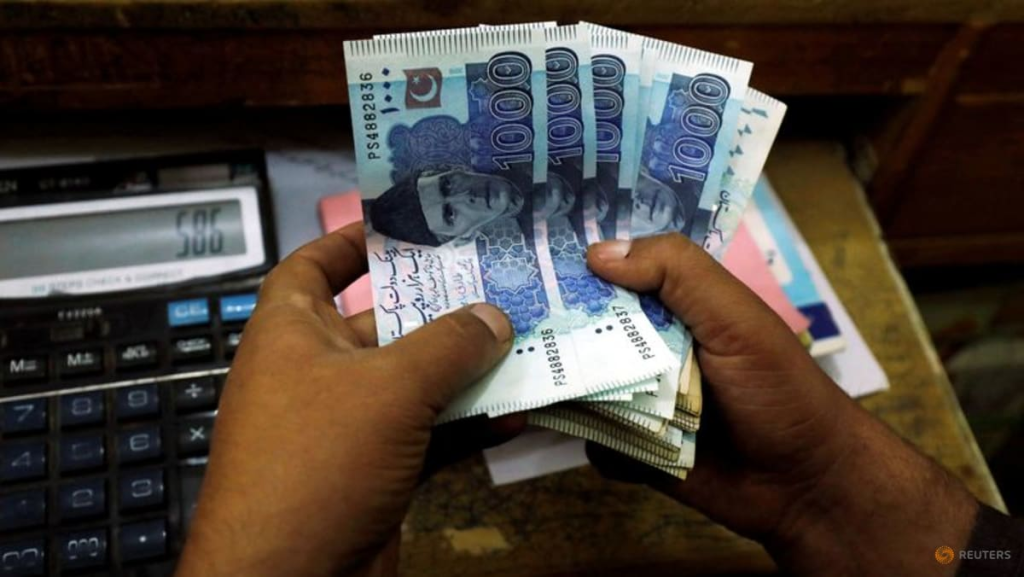The Pakistani Rupee (PKR) has been on a remarkable upward trajectory against the US Dollar (USD) in recent weeks. This trend has caught the attention of investors and economists alike, as the Rupee continues to gain strength and race past the Greenback. In this article, we will explore the factors behind this significant appreciation of the PKR and its implications for the Pakistani economy.
Factors Driving the Appreciation of the Pakistani Rupee
Strengthening Economic Fundamentals
One of the key factors contributing to the appreciation of the Pakistani Rupee is the strengthening of the country’s economic fundamentals. Pakistan has made significant progress in recent years in terms of fiscal discipline, macroeconomic stability, and structural reforms. These positive developments have boosted investor confidence and attracted foreign investment, leading to an increased demand for the Rupee.
Staff-Level Agreement with the International Monetary Fund
Another crucial factor behind the Rupee’s appreciation is the recent staff-level agreement between Pakistan and the International Monetary Fund (IMF) on a $3 billion Stand-by Arrangement (SBA). This agreement signifies the endorsement of Pakistan’s economic policies by the IMF and has instilled a sense of stability and confidence in the market. The IMF’s financial support has helped stabilize the economy and strengthen the Rupee.
Control over Inflation

Pakistan has also successfully managed to control inflation, which has played a vital role in the appreciation of the Rupee. The State Bank of Pakistan (SBP) has implemented prudent monetary policies, including tightening the money supply and adopting a more cautious approach towards interest rates. These measures have helped curb inflationary pressures and maintain the value of the Rupee.
Increase in Foreign Exchange Reserves
The increase in Pakistan’s foreign exchange reserves has also contributed to the strengthening of the Rupee. The country has witnessed a surge in remittances from overseas Pakistanis, which has bolstered the foreign exchange reserves and provided stability to the currency. Moreover, the government’s efforts to attract foreign direct investment (FDI) and promote exports have further boosted the reserves and supported the Rupee’s appreciation.
Impact on the Pakistani Economy
The appreciation of the Pakistani Rupee against the US Dollar has several implications for the country’s economy. Let’s explore these effects in detail.
Exports and Imports
While the strengthening Rupee is favorable for imports as it reduces the cost of foreign goods, it can have a negative impact on exports. A stronger currency makes Pakistani goods relatively more expensive in the international market, potentially decreasing demand for exports. This could lead to a decline in export revenues and a widening trade deficit. However, the government can take steps to mitigate these effects by offering incentives to exporters and diversifying export markets.
Foreign Debt
The appreciation of the Rupee can have mixed implications for Pakistan’s foreign debt. On one hand, it reduces the burden of servicing foreign debt denominated in US Dollars. As the Rupee gains strength, the amount of Rupees required to repay the debt decreases. This can provide relief to the government and free up resources for other developmental projects. On the other hand, it may discourage foreign investment in the country’s debt instruments, as investors prefer higher returns due to exchange rate fluctuations.
Inflation and Purchasing Power

The appreciation of the Rupee can help control inflationary pressures in the economy. A stronger currency lowers the cost of imported goods, including essential commodities, and reduces inflationary pressures. This can lead to increased purchasing power for consumers, allowing them to afford a higher standard of living. However, it can also pose challenges for domestic industries that rely on imported raw materials, as their input costs may increase.
Tourism and Remittances
The appreciation of the Rupee can have a positive impact on the tourism industry and remittances from overseas Pakistanis. A stronger currency makes Pakistan an attractive destination for foreign tourists, as their purchasing power increases when converting their currency into Rupees. Similarly, overseas Pakistanis sending remittances to their families in Pakistan can benefit from the higher value of the Rupee, leading to increased inflows of foreign exchange.
Future Outlook and Challenges
While the recent appreciation of the Pakistani Rupee is a positive development, there are several challenges that need to be addressed to sustain this upward trend. Here are some key considerations:
External Factors
The value of the Rupee is significantly influenced by external factors such as global economic conditions, geopolitical tensions, and fluctuations in the price of commodities. Any adverse changes in these factors can impact the Rupee’s value and pose challenges for the Pakistani economy.
Current Account Balance
Pakistan’s current account balance, which represents the country’s trade balance and net income from abroad, plays a crucial role in determining the value of the Rupee. A sustained improvement in the current account balance is essential to maintain the Rupee’s strength and prevent any potential depreciation in the future.
Structural Reforms
To ensure the long-term stability and appreciation of the Rupee, Pakistan needs to continue implementing structural reforms aimed at improving the business environment, attracting foreign investment, and diversifying its export base. These reforms will help enhance economic competitiveness and reduce the country’s dependence on external factors.
Monetary Policy
The State Bank of Pakistan plays a crucial role in managing the value of the Rupee through its monetary policy decisions. It needs to maintain a delicate balance between supporting economic growth and controlling inflation to ensure the stability of the currency.
Conclusion
The appreciation of the Pakistani Rupee against the US Dollar is a positive development that reflects the country’s improving economic fundamentals and the confidence of international investors. However, sustaining this upward trend requires continued efforts in implementing structural reforms, maintaining macroeconomic stability, and addressing challenges such as the current account balance and external factors. The strengthening Rupee has both positive and negative implications for the Pakistani economy, and it is crucial for policymakers to strike a balance to ensure long-term stability and growth.

